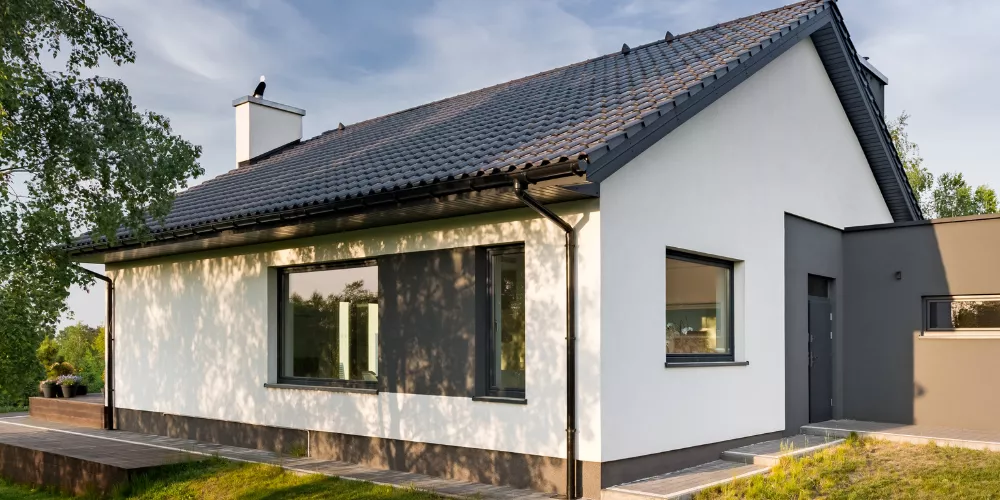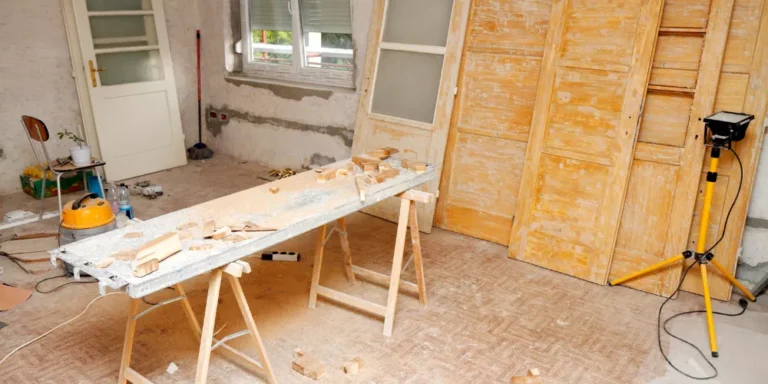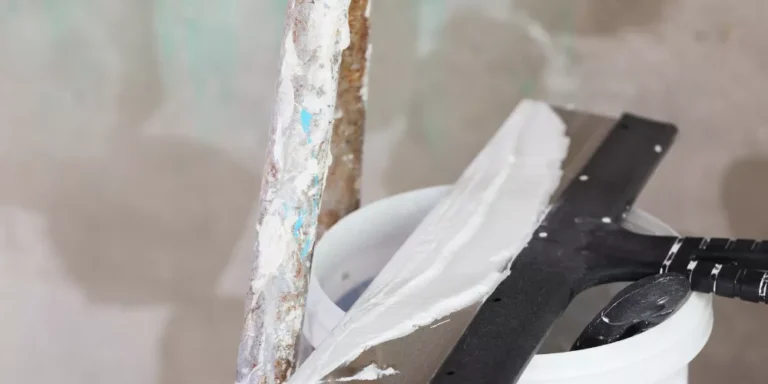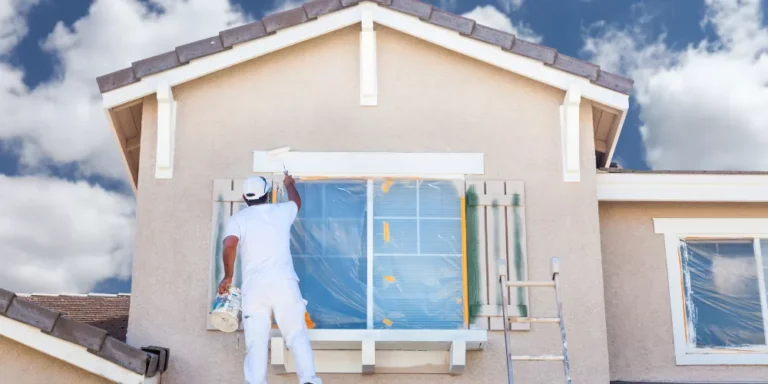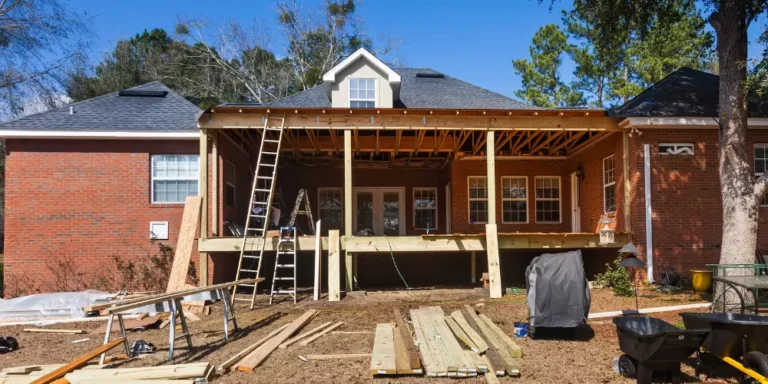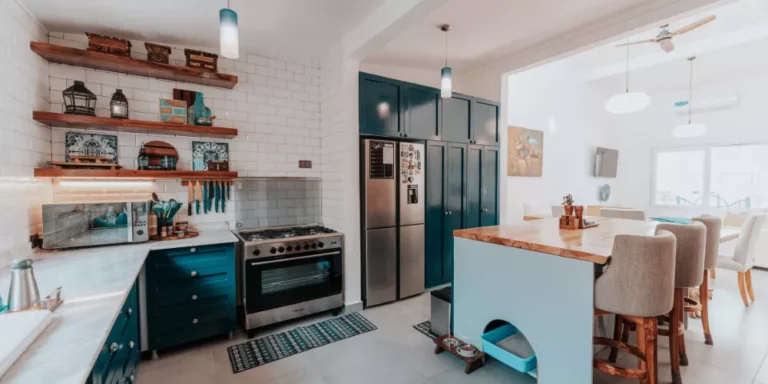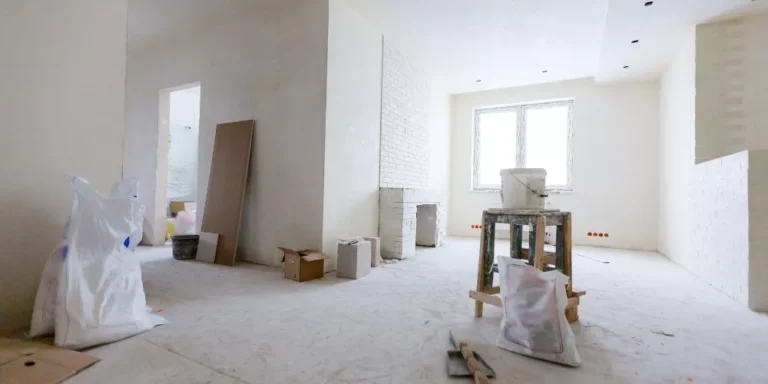What are energy efficient upgrades homeowners in the US are missing
Energy efficiency has become a critical consideration for homeowners across the USA. Rising utility costs, environmental concerns, and government incentives have made energy-efficient upgrades increasingly appealing. Many homes still have outdated systems, appliances, and insulation that waste energy and increase monthly bills. Simple changes can lead to substantial savings while improving comfort and reducing the carbon footprint. Homeowners often overlook smaller improvements that cumulatively make a significant difference. Advances in technology have made energy-efficient solutions more accessible and cost-effective than ever before. From heating and cooling systems to lighting and appliances, opportunities for upgrades exist in every home. Proper insulation, weatherproofing, and window upgrades prevent heat loss during winter and keep homes cooler in summer. Smart home technology helps monitor and optimize energy use in real-time. Many states in the USA offer rebates or tax credits for energy-efficient improvements. Routine maintenance and upgrading old systems can extend lifespan and reduce waste. Even modest improvements, like sealing leaks and adding programmable thermostats, can lower energy bills. Understanding which upgrades provide the best return on investment is essential for long-term savings. Energy efficiency contributes to overall home comfort, environmental stewardship, and financial security. Homeowners can also improve indoor air quality by reducing energy waste and ensuring proper ventilation. Lighting, appliances, and water systems all play a role in energy consumption. Awareness of energy efficiency trends helps homeowners make informed decisions. Strategic upgrades today can protect against rising energy costs tomorrow. Identifying missed opportunities is the first step toward a smarter, greener, and more efficient home.
What are energy efficient upgrades homeowners in the US are missing
Many homeowners in the USA fail to implement upgrades that could significantly reduce energy use. Identifying overlooked areas helps save money and improve home comfort.
1. Upgrading to a Programmable Thermostat
Many homeowners still rely on manual thermostats that waste energy. Programmable or smart thermostats adjust heating and cooling automatically. They can be set to lower energy use when no one is home. Smart models allow remote control through smartphones. They also provide usage data to optimize efficiency. Adjusting temperature schedules prevents unnecessary heating or cooling. Energy savings can be substantial over time. Integration with smart home systems adds convenience and automation. Certain thermostats learn patterns and adjust automatically for efficiency. They reduce wear on HVAC systems by preventing overuse. Programmable thermostats are easy to install and relatively inexpensive. Many offer features like geofencing for presence detection. Older models may not support these features, missing energy-saving opportunities. Adjusting settings seasonally enhances performance. They are compatible with both heating and cooling systems. Proper placement ensures accurate temperature readings. Homeowners often overlook these upgrades despite high potential savings. Combining thermostats with insulation and window upgrades maximizes benefits. Regular updates of software ensure optimal performance. A programmable thermostat is a simple yet effective way to reduce energy waste.
2. Sealing Air Leaks
Unsealed gaps around doors, windows, and vents allow conditioned air to escape. Many homes have invisible leaks that increase heating and cooling costs. Weatherstripping and caulking are simple solutions. Sealing leaks improves comfort and reduces drafts. Attic hatches, baseboards, and electrical outlets are common leak sources. Even small gaps contribute to significant energy loss over time. Use foam or sealant for larger openings. Check for leaks using thermal imaging or a smoke test. Regular inspections ensure persistent leaks are addressed. Proper sealing reduces workload on HVAC systems. Doors and windows should fit properly and close tightly. Air sealing prevents moisture intrusion, which can cause mold. It also improves indoor air quality by reducing dust infiltration. Professional energy audits can identify hidden leaks. Combine sealing with insulation for maximum efficiency. Air sealing is a low-cost upgrade with high energy savings potential. Homeowners often underestimate the cumulative impact of minor leaks. Maintaining seals ensures consistent efficiency. Properly sealed homes maintain temperature and comfort year-round.
3. Insulating Attics and Walls
Insufficient insulation is a common energy drain in older US homes. Attics and walls without adequate insulation allow heat transfer. Adding insulation reduces heating and cooling requirements. Spray foam, fiberglass batts, or blown-in insulation are popular options. Insulation levels should meet regional climate recommendations. Inspect areas for gaps or compressed insulation. Upgrading insulation improves indoor comfort and reduces utility bills. Insulation also enhances soundproofing. Proper installation ensures long-term performance. Check for moisture barriers to prevent mold. Basement walls and crawl spaces can also benefit from insulation. Energy efficiency rebates may be available for insulation upgrades. Evaluate existing insulation before adding new layers. Professional assessment ensures proper coverage and material choice. Insulation increases home value by improving energy performance. Older homes often lack modern standards for insulation thickness. Combining insulation with air sealing maximizes efficiency. Homeowners may overlook minor areas like rim joists or attic kneewalls. Retrofitting insulation is cost-effective with significant long-term savings. Proper insulation ensures energy efficiency, comfort, and durability.
4. Upgrading Windows
Older, single-pane windows lose heat rapidly. Many US homes still have inefficient windows that compromise energy efficiency. Replacing windows with double- or triple-pane models reduces energy loss. Look for ENERGY STAR-rated windows for optimal performance. Low-emissivity (Low-E) coatings reflect heat while allowing natural light. Properly sealed frames prevent drafts and moisture intrusion. Window replacement improves both comfort and aesthetic appeal. Inspect for damaged caulking or weatherstripping before replacement. Energy-efficient windows can reduce HVAC load significantly. Consider window tinting or films for additional energy control. Upgrade strategically, prioritizing rooms with the highest energy loss. Proper installation ensures airtight performance. Window upgrades increase home resale value. Use curtains or blinds to enhance efficiency further. Homeowners often ignore older windows, missing potential savings. Maintain window seals and clean regularly to preserve efficiency. Combination with insulation and air sealing maximizes effectiveness. Modern windows also reduce outside noise. Choosing the right material, such as vinyl or fiberglass, ensures durability. Energy-efficient windows contribute to both financial savings and environmental benefits.
5. Replacing Old Appliances
Older appliances consume more electricity than newer ENERGY STAR-rated models. Refrigerators, washing machines, dishwashers, and ovens are common culprits. Upgrading to energy-efficient appliances reduces utility bills. Modern appliances often offer improved performance and features. Look for EnergyGuide labels to compare energy use. Appliances with standby modes should be minimized or unplugged when not in use. Water heaters and HVAC equipment also benefit from modernization. Replacement provides long-term energy and cost savings. Proper sizing ensures optimal efficiency for the household. Consider front-loading washing machines for lower water and energy use. Smart appliances allow monitoring and scheduling to save energy. Upgrade gradually based on budget and priority. Regular maintenance ensures appliances operate efficiently. Discarding inefficient models prevents unnecessary energy waste. Combining appliance upgrades with other energy improvements amplifies savings. Rebates or tax credits may be available for specific appliance replacements. Efficiency standards continue to evolve, making newer models more effective. Careful research ensures that upgrades provide measurable benefits. New appliances improve comfort, convenience, and energy performance.
6. Installing Energy-Efficient Lighting
Many homes still use incandescent bulbs that waste energy. LED bulbs provide long-lasting, energy-efficient lighting alternatives. LEDs consume less power and produce less heat. Replacing all household lighting can reduce electricity bills significantly. Consider dimmable LEDs for adjustable brightness. Task lighting improves energy use by targeting specific areas. Smart lighting systems allow scheduling and remote control. Use motion sensors in seldom-used areas like basements or closets. Proper placement ensures effective illumination while minimizing wasted energy. Combine with natural lighting strategies to reduce artificial light use. LED fixtures often require lower maintenance. Homeowners may overlook outdoor lighting efficiency. Solar-powered exterior lights provide energy savings for landscaping or pathways. Evaluate fixture compatibility with LED bulbs. Lighting upgrades are low-cost but highly effective in energy reduction. Retrofitting existing fixtures is simple and quick. Monitor lighting patterns to optimize usage. Efficient lighting improves ambiance and reduces environmental impact. Energy-efficient lighting is a simple way to reduce daily energy consumption.
7. Adding Solar Panels
Solar panels provide renewable energy and long-term savings. Many homeowners in the USA have not installed solar due to upfront costs. Federal and state incentives can reduce installation costs significantly. Panels convert sunlight into electricity, reducing reliance on the grid. Solar energy can power lights, appliances, or HVAC systems. Net metering programs allow homeowners to sell excess energy back to the grid. Proper placement and roof condition are critical for maximum efficiency. Solar installations can increase property value. Combine with battery storage for energy independence. Panels require minimal maintenance once installed. Evaluate energy consumption to determine panel size. Professional assessment ensures proper orientation and installation. Solar energy reduces carbon footprint and energy bills. Some states offer grants or financing options for solar installation. Long-term savings often offset initial investment within years. Solar systems can be integrated into new construction or retrofits. Panels are durable and withstand various weather conditions. Upgrading to solar demonstrates environmental responsibility. Solar energy reduces dependence on fossil fuels. It is a major energy-efficient upgrade often overlooked by homeowners.
8. Upgrading HVAC Systems
Older heating and cooling systems are often inefficient and costly to run. Modern HVAC systems provide higher efficiency, variable speed options, and better climate control. Upgrading improves comfort and reduces energy consumption. Ensure proper sizing for your home to maximize efficiency. Regular maintenance, like filter replacement, enhances performance. High-efficiency furnaces and air conditioners can lower monthly bills. Heat pumps are an energy-efficient alternative in certain climates. Proper ductwork ensures even distribution and minimizes energy loss. Programmable or smart thermostats complement new HVAC systems. Consider zoning for targeted temperature control in different areas. Energy-efficient systems reduce greenhouse gas emissions. Incentives may be available for high-efficiency HVAC installation. Proper installation ensures longevity and consistent operation. Evaluate refrigerant type and environmental impact. Professional assessment avoids costly mistakes and ensures compliance. Upgrading HVAC is a long-term investment in comfort and savings. Choose systems with high SEER or AFUE ratings. Modern HVAC reduces noise and improves indoor air quality. Energy-efficient heating and cooling is a critical area often overlooked by homeowners.
9. Improving Water Heating Efficiency
Water heating is a significant contributor to energy bills. Many homes rely on inefficient tank water heaters. Tankless water heaters provide hot water on demand, reducing standby energy loss. Heat pump water heaters use ambient air to heat water efficiently. Insulating existing water heaters and pipes reduces heat loss. Set water temperature to an optimal level, typically around 120°F. Solar water heating is another energy-efficient alternative. Proper placement minimizes heat loss during distribution. Efficient fixtures like low-flow showerheads reduce water and energy use. Smart controls allow scheduling for peak efficiency. Maintenance, such as descaling and flushing tanks, improves performance. Evaluate fuel type and efficiency ratings when upgrading. Water heating improvements contribute to energy savings across the household. Homeowners often neglect water heating when planning efficiency upgrades. Efficient water heating systems reduce monthly utility costs. Consider combination with solar panels for sustainable energy solutions. Proper installation prevents safety hazards. Energy-efficient water heating balances comfort and conservation.
10. Weatherproofing Doors and Windows
Doors and windows are major sources of energy loss. Weatherproofing reduces drafts, heat transfer, and moisture intrusion. Apply caulking and weatherstripping around frames. Install door sweeps to seal gaps at the bottom. Storm doors and windows add an extra insulation layer. Check for warped or damaged frames that compromise sealing. Exterior shutters or shades improve energy control. Inspect annually and replace worn materials promptly. Proper weatherproofing improves HVAC efficiency. Use insulated doors for main entrances. Combine with energy-efficient windows for maximum effect. Reduce air leakage to maintain consistent indoor temperature. Weatherproofing is a low-cost method with high energy-saving potential. Homeowners may overlook exterior maintenance as an efficiency measure. Ensure all openings, including vents and utility penetrations, are sealed. Weatherproofing improves comfort during extreme temperatures. Professional consultation ensures comprehensive coverage. Regular upkeep maintains energy efficiency over time. Weatherproofing contributes to a more sustainable and cost-effective home.
Conclusion
Energy efficiency is an area where many homeowners in the USA are missing opportunities. Upgrading to programmable thermostats, sealing air leaks, and improving insulation reduces energy waste. Replacing old windows, doors, appliances, and lighting further increases efficiency. Solar panels, modern HVAC systems, and efficient water heating provide long-term savings and environmental benefits. Weatherproofing and proper maintenance ensure consistent performance and comfort. Many overlooked upgrades offer a high return on investment and lower utility bills. Energy-efficient improvements contribute to home value, comfort, and sustainability. Identifying gaps in existing systems is the first step toward a more efficient home. Regular audits and monitoring help track energy use and improvements. Combining multiple upgrades maximizes cost savings and reduces environmental impact. Awareness of rebates, incentives, and tax credits helps offset initial expenses. Proper planning, installation, and maintenance ensure upgrades deliver expected results. Homeowners can make incremental changes or complete overhauls depending on budget. Even small adjustments, like sealing leaks or switching to LEDs, have measurable effects. Long-term planning and smart upgrades protect against rising energy costs. Energy efficiency improves indoor air quality, comfort, and safety. Homeowners who address overlooked opportunities achieve both financial and environmental benefits. A proactive approach ensures a modern, efficient, and sustainable home for years to come.

